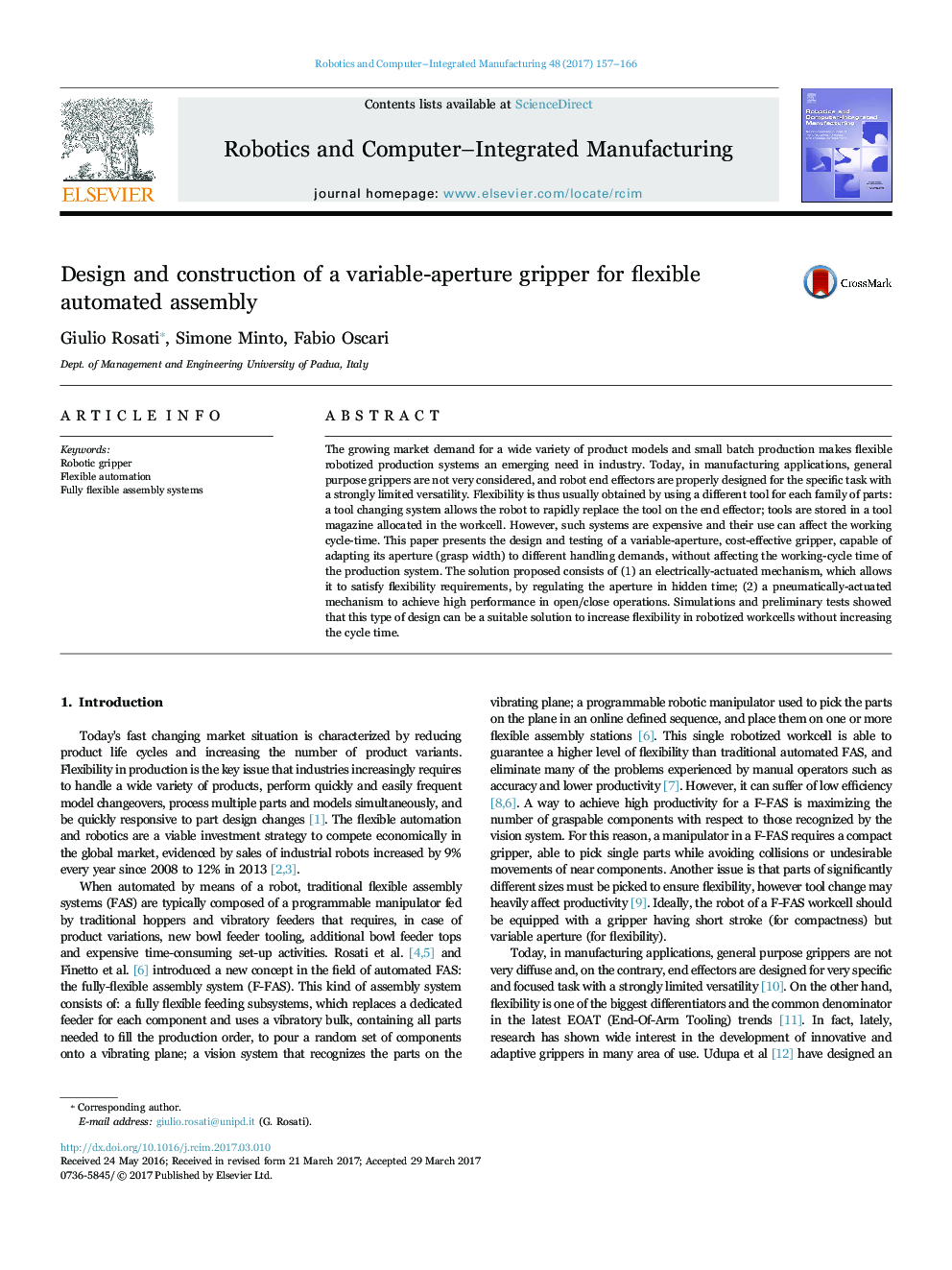| Article ID | Journal | Published Year | Pages | File Type |
|---|---|---|---|---|
| 4949033 | Robotics and Computer-Integrated Manufacturing | 2017 | 10 Pages |
Abstract
The growing market demand for a wide variety of product models and small batch production makes flexible robotized production systems an emerging need in industry. Today, in manufacturing applications, general purpose grippers are not very considered, and robot end effectors are properly designed for the specific task with a strongly limited versatility. Flexibility is thus usually obtained by using a different tool for each family of parts: a tool changing system allows the robot to rapidly replace the tool on the end effector; tools are stored in a tool magazine allocated in the workcell. However, such systems are expensive and their use can affect the working cycle-time. This paper presents the design and testing of a variable-aperture, cost-effective gripper, capable of adapting its aperture (grasp width) to different handling demands, without affecting the working-cycle time of the production system. The solution proposed consists of (1) an electrically-actuated mechanism, which allows it to satisfy flexibility requirements, by regulating the aperture in hidden time; (2) a pneumatically-actuated mechanism to achieve high performance in open/close operations. Simulations and preliminary tests showed that this type of design can be a suitable solution to increase flexibility in robotized workcells without increasing the cycle time.
Keywords
Related Topics
Physical Sciences and Engineering
Computer Science
Artificial Intelligence
Authors
Giulio Rosati, Simone Minto, Fabio Oscari,
